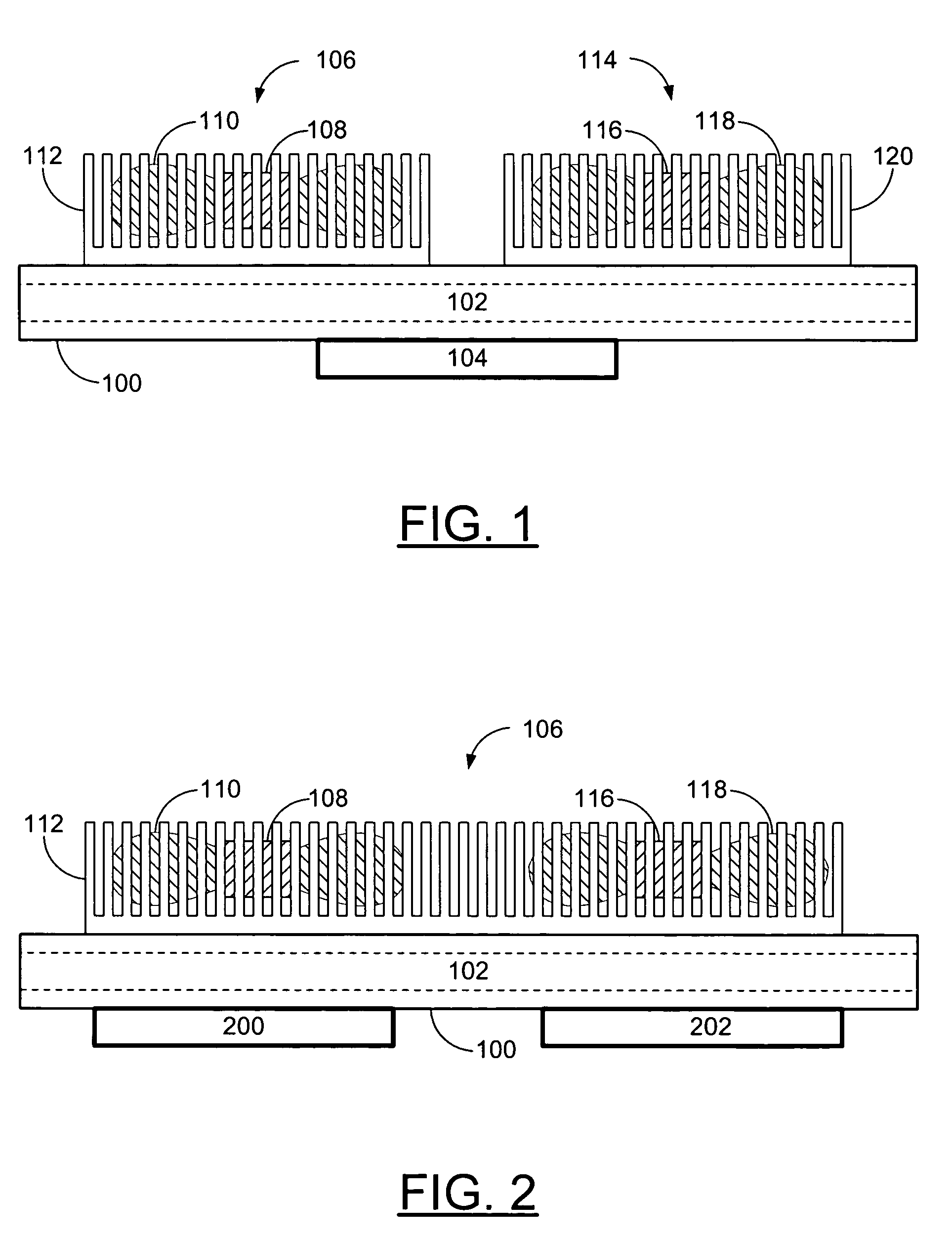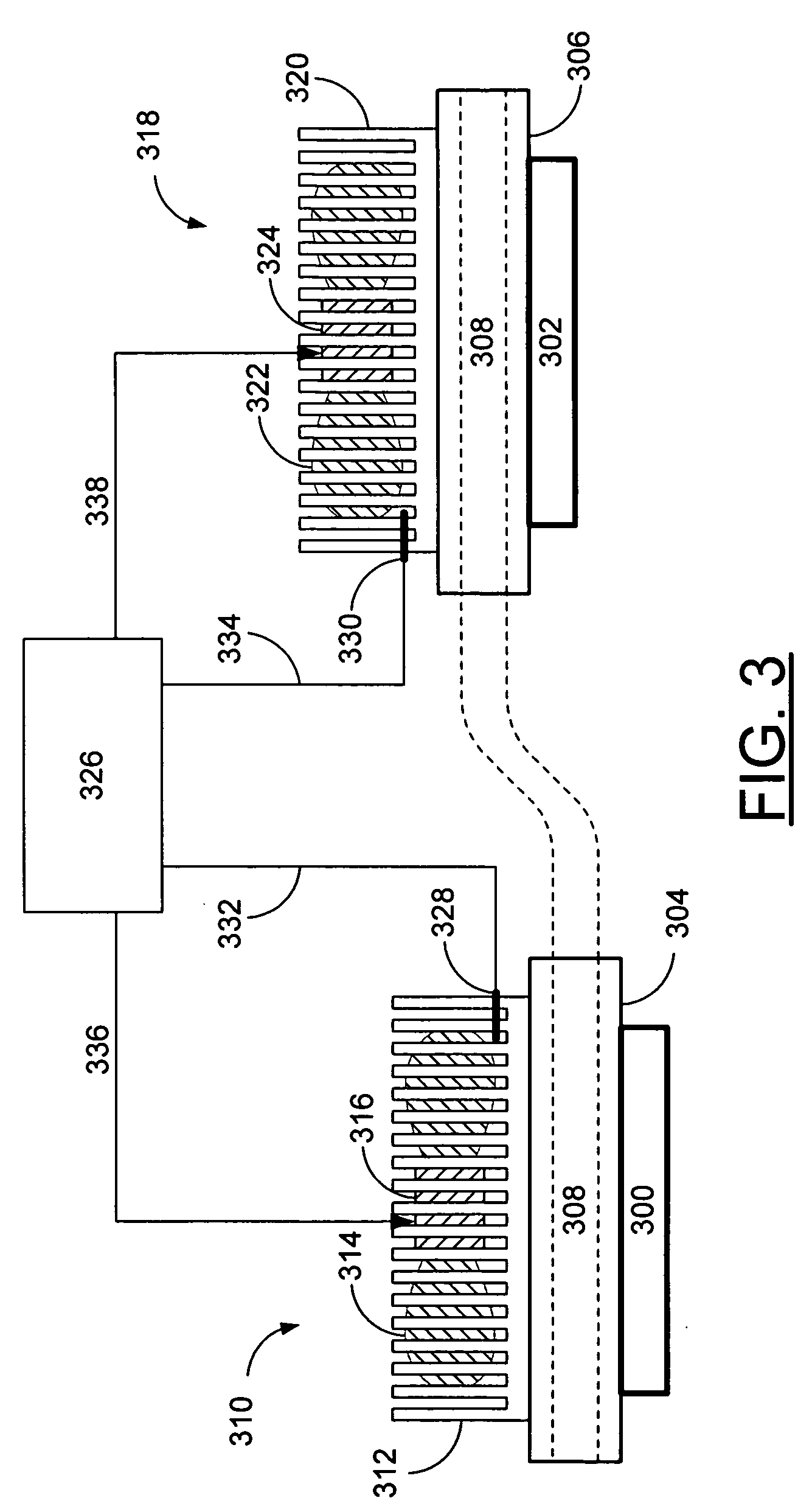Heat sink including redundant fan sinks
a technology of fan sinks and heat sinks, applied in the field of heat sinks, can solve the problems of increasing failure mechanisms such as electromigration, increasing circuits, and increasing heat generation of modern electronic devices, and increasing the cooling capacity of the remaining fan sinks. , to achieve the effect of increasing the cooling efficiency of the remaining fan sinks
- Summary
- Abstract
- Description
- Claims
- Application Information
AI Technical Summary
Benefits of technology
Problems solved by technology
Method used
Image
Examples
Embodiment Construction
[0010]FIG. 1 is a front view of a redundant fan sink design including heat pipes according to the present invention configured to cool a single electronic device. In this example embodiment of the present invention a heat sink is built including two fan sinks. Other embodiments of the present invention may include any number of additional fan sinks to the two shown in FIG. 1. An electronic device 104 that generates heat is thermally and mechanically coupled to a heat spreader 100. In this example embodiment of the present invention, the heat spreader 100 includes at least one heat pipe 102 to increase the efficiency of the heat spreader 100 in eliminating hot spots over the electronic device 104. Other embodiments of the present invention may not require the use of heat pipes. A first fan sink 106 comprising a first heat sink 112 surrounding a first fan is thermally and mechanically coupled to the heat spreader 100. The first fan includes a first motor 108 and first fan blades 110. ...
PUM
 Login to View More
Login to View More Abstract
Description
Claims
Application Information
 Login to View More
Login to View More - R&D
- Intellectual Property
- Life Sciences
- Materials
- Tech Scout
- Unparalleled Data Quality
- Higher Quality Content
- 60% Fewer Hallucinations
Browse by: Latest US Patents, China's latest patents, Technical Efficacy Thesaurus, Application Domain, Technology Topic, Popular Technical Reports.
© 2025 PatSnap. All rights reserved.Legal|Privacy policy|Modern Slavery Act Transparency Statement|Sitemap|About US| Contact US: help@patsnap.com



